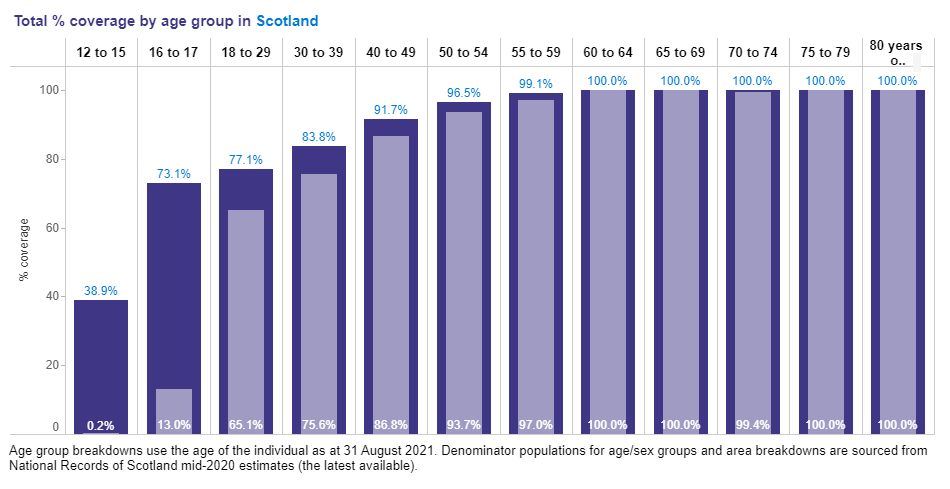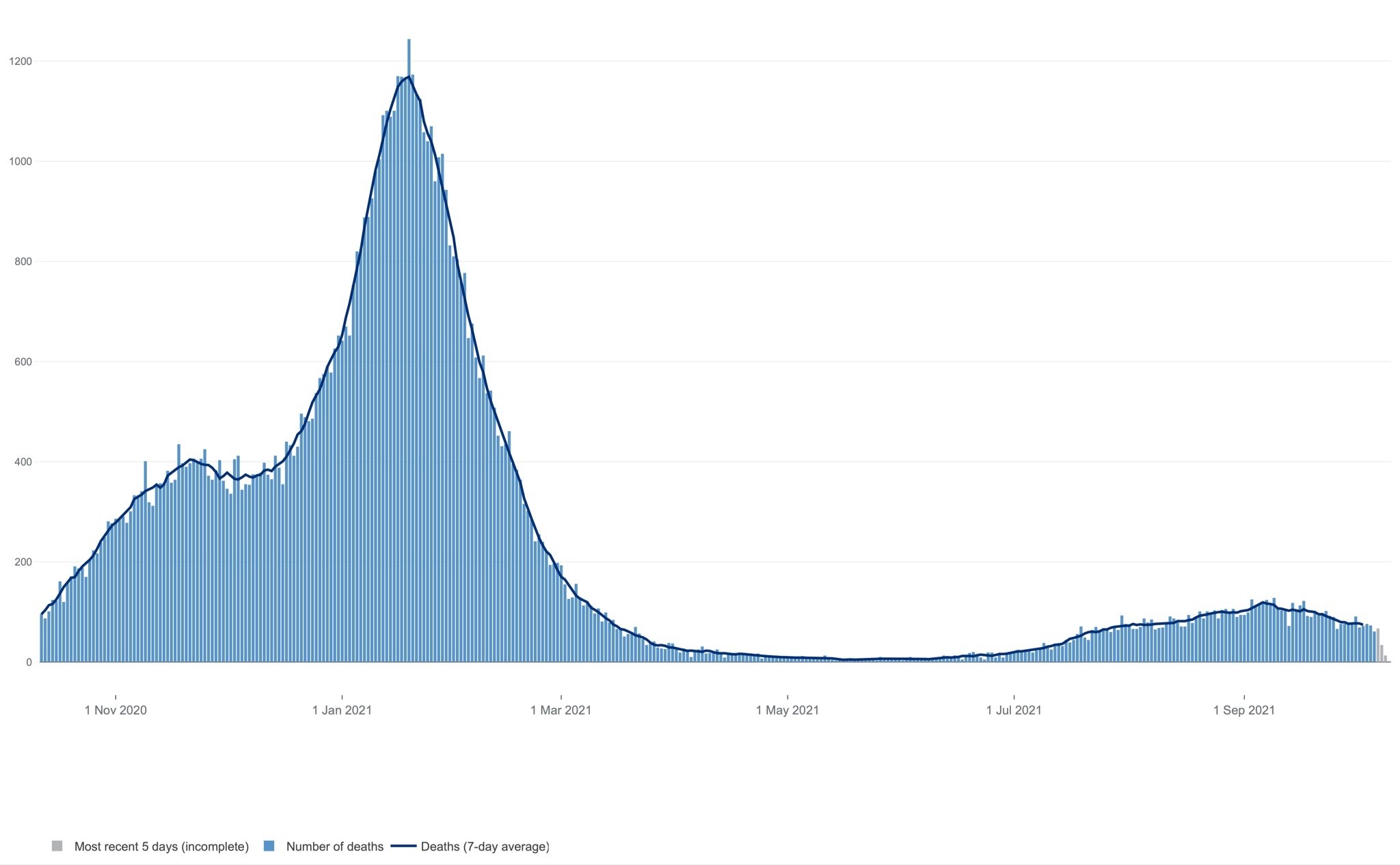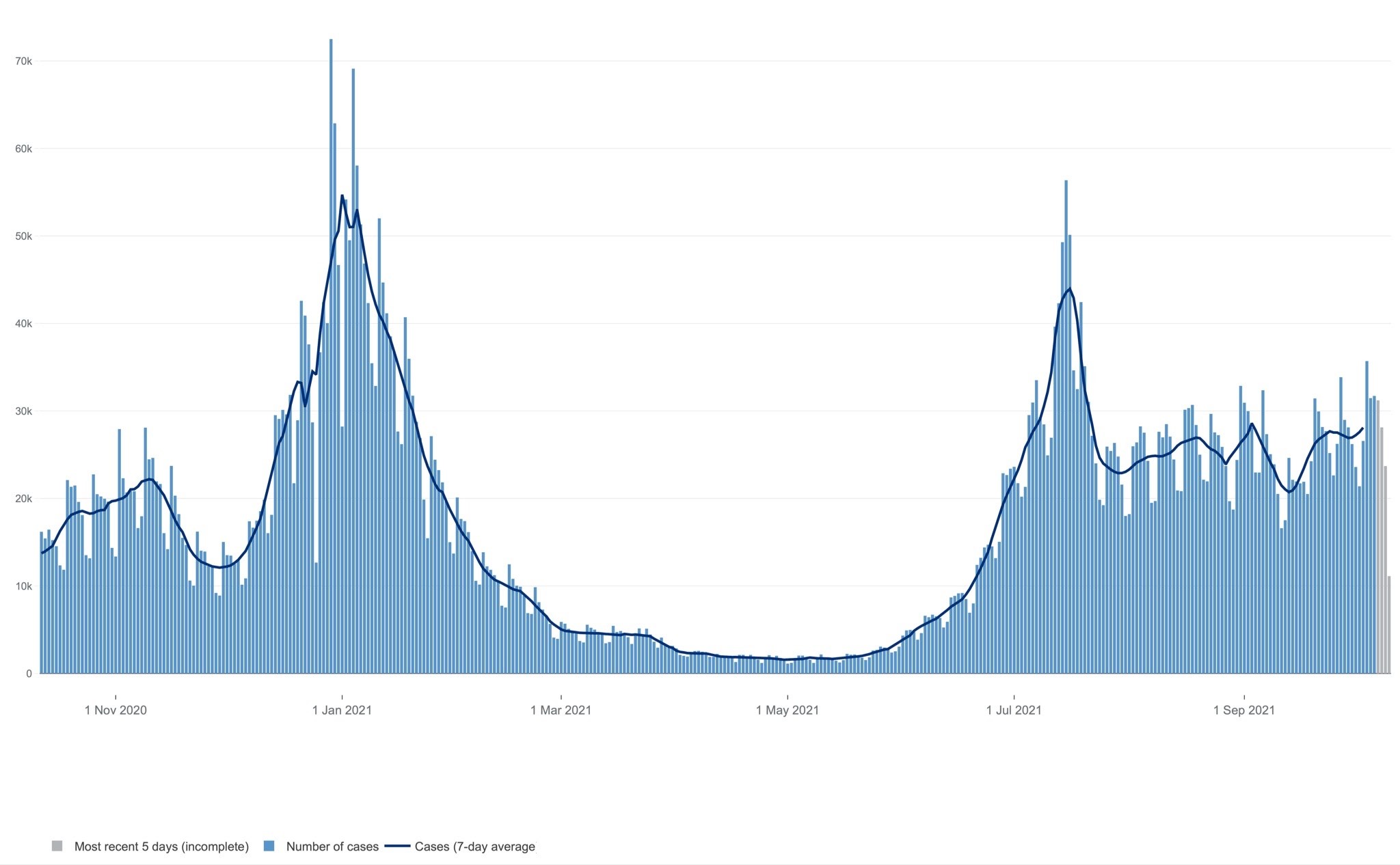
Flawed reasoning: The number of COVID-19 deaths is influenced by several factors, most importantly the ongoing spread of the disease. The relaxation of measures to slow transmission of COVID-19 has led to a large increase in new cases. The fact that deaths have risen since the same time last year doesn’t mean that the vaccines are ineffective.

RECLAMACION: “Covid-19 vaccinated people have accounted for 81% of Covid-19 deaths this summer”; “Covid-19 deaths are over twelve times higher than the same period last year”; “deaths among Teen Boys have risen by 63% since they started to get the Covid-19 vaccine”; “vaccine programme has clearly failed”
REVIEW
An article on The Exposé (formerly The Daily Exposé) a website marked as promoting conspiracy theories by Media Bias Fact Check, made a series of claims about the safety and effectiveness of the COVID-19 vaccines being used in the U.K. Logically identified the person behind this website as Jonathan Allen-Walker.
COVID-19 vaccines are highly effective at reducing the risk of infection, hospitalization, and death; to determine effectiveness, it is necessary to compare proportion of deaths, not absolute numbers
The scientific evidence demonstrates that the COVID-19 vaccines are about 90% effective at protecting people from dying of COVID-19. However, the article claimed that the “vaccine programme has clearly failed”, stating that 81% of deaths due to COVID-19 over the summer were among vaccinated people. This is based on official figures from Public Health Scotland, which showed that 80% of deaths during the period between 21 August and 17 September 2021 were people who were at least partially vaccinated. For fully vaccinated people the figure was 77%.
Currently, 86.5% of adults in Scotland are fully vaccinated. As these numbers show, vaccinated people far outnumber unvaccinated people. As such, we cannot directly compare the number of deaths in one group to the other, as the Exposé article did. In order to determine whether the vaccines are effective at reducing the risk of death, we need to instead compare the proportion of deaths between the vaccinated and unvaccinated groups, as explained by biostatistician Lucy D’Agostino McGowan in this tweet. This method accounts for the large disparity in the size of the two groups.
Another significant difference is the age profile of the two groups. The vaccine rollout began with older age groups as they are the most vulnerable to dying from COVID-19. The vaccine uptake among older people is still significantly higher than younger people. The report from Public Health Scotland said that “Of the confirmed COVID-19 related deaths, in individuals that have received two doses of COVID-19 vaccine, 79.5% were in the 70 and over age group” since the beginning of the vaccine rollout and that these individuals had several comorbidities which contributed to their deaths.
To account for these differences in size and age between the vaccinated and unvaccinated groups, the Public Health Scotland report included the “Age Standardised Mortality Rate”. This provides a more useful comparison for understanding the effectiveness of the vaccines. These rates show that unvaccinated people have approximately four times greater risk of dying from COVID-19.
But it’s important to note that this figure doesn’t fully reflect the effectiveness of the vaccines, as we need to account for other risk factors apart from age. Apart from the elderly, vaccination efforts also focused on groups with underlying health conditions or increased workplace exposure to COVID-19, also called priority groups. Vaccine uptake is highest among these groups and lowest among younger people, who have a comparatively lower risk of dying from COVID-19 (see Figure 1).

Figure 1. Vaccine coverage in Scotland, classified based on age group and vaccination status [one dose (dark purple) or both doses (light purple)]. Graph from Public Health Scotland COVID-19 Daily Dashboard, retrieved on 12 October 2021.
Increases in cases lead to increases in deaths, but vaccines significantly blunt the impact of deaths
The vaccine rollout was primarily aimed at reducing hospitalizations and deaths in people who contract COVID-19, but they aren’t 100% effective at doing so. If cases rise, we would still expect to see a certain increase in deaths.
The Exposé article used data published by Johns Hopkins University to claim that “Covid-19 deaths are over twelve times higher than the same period last year”. To support this claim, the article used the figures from 17 September 2021 in England. However, the deaths recorded on 17 September 2021 (130) were about 7.2 times higher than the same day the previous year (18), while the 7-day average for deaths on 17 September 2021 (110) was 9.2 times higher than the same day in 2020 (12). It is unclear how the article arrived at a figure of “over 12 times higher”.
The case numbers in mid-September 2021 in England were about 30,000 new cases per day on average, as shown in Figure 2. Cases previously reached this level during the wave of infections at the beginning of 2021. In late January 2021, there were about 30,000 new cases per day and about 800 to 1,000 daily deaths. The far fewer deaths during September is indicative of the effectiveness of the vaccine rollout in breaking the link between cases and deaths.


Figure 2. Graphs showing the number of COVID-19 deaths (top), defined as deaths of people who had had a positive test result for COVID-19 and died within 28 days of the first positive test, and cases (bottom), defined as people with at least one positive COVID-19 test result. Data are specific to England only. Graphs from the UK Coronavirus Dashboard, retrieved on 12 October 2021.
As the graphic below (Figure 3) from the United Nations’ Verified initiative explains, high levels of vaccination helps to break the link between the numbers of cases and deaths.

Figure 3. Graphic explaining how high levels of vaccination has reduced deaths compared to previous waves.
Longer-term data needed to conclude on changes in deaths
The article claimed that “deaths among [teenage boys] have risen by 63% since they started to get the Covid-19 vaccine”. The article showed figures from the U.K.’s Office for National Statistics (ONS), which recorded 231 deaths among males aged 15 to 19 in England and Wales between 2 May and 18 September 2021. This was compared to 142 deaths in the same group during a similar period in 2020.
However, these two numbers alone cannot tell us whether there was an atypical rise in deaths in 2021, or if there was an unusual fall in deaths in 2020. Given the restrictions on many activities during 2020, this may not be a useful benchmark for a typical year. However, the ONS didn’t publish statistics for this particular age band in previous years, so we cannot make a longer-term comparison.
The article drew the conclusion that the rise in deaths is due to the vaccine rollout, as the period overlaps with the time when the vaccines were made available to this age group. The article implied that these deaths were due to myocarditis, or inflammation of the heart, caused by the vaccine.
Myocarditis is a known rare side effect of mRNA-based Pfizer-BioNTech and Moderna vaccines, which occurs most commonly in young males. The U.S. Centers for Disease Control and Prevention estimated that there are about 60 cases of myocarditis for every million second doses given to boys aged 12 to 17. However, most cases of myocarditis are mild and symptoms clear within a few days. Given the rarity of the condition and its typical mildness, it’s not plausible to suggest that the apparent additional 89 deaths among males aged 15 to 19 in summer 2021 were due to myocarditis.
It is also important to note that COVID-19 itself is also linked to myocarditis. A recent study, which has not yet been peer-reviewed, suggested that a COVID-19 infection was six times more likely to cause myocarditis in young males than the vaccine.
Conclusion
In summary, the evidence shows that COVID-19 vaccines are highly effective at reducing the risk of death due to the disease, and that the death toll we observe now would be even higher were it not for the vaccines. However, no vaccine is 100% effective, therefore a certain proportion of vaccinated people will still get the disease, and some of them will die. As the majority of adults in the U.K. are vaccinated, and vaccination efforts have focused on the most vulnerable populations, we would expect that they would account for a significant number of COVID-19 deaths. Without additional measures to reduce transmission, COVID-19 cases will continue to spread and cause a number of deaths.
Common side effects of the COVID-19 vaccines are mild and short-lived, although the vaccines can cause serious side effects on rare occasions. But the risks that arise from getting COVID-19 are greater than the risks from the vaccines. It is safer to get vaccinated than not to.
REFERENCE
- 1 – Singer et al. (2021) Risk of Myocarditis from COVID-19 Infection in People Under Age 20: A Population-Based Analysis. medRxiv.


